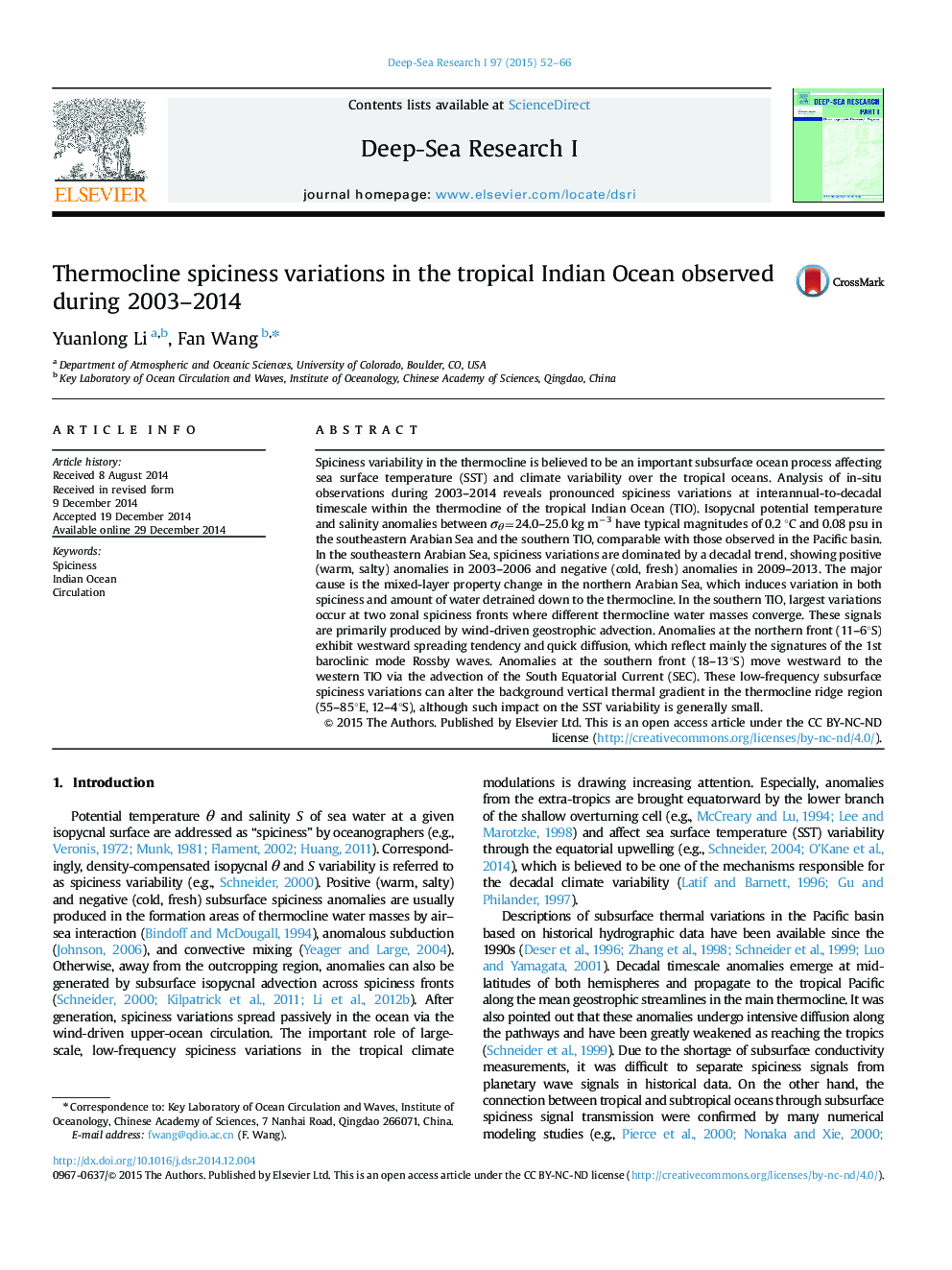| کد مقاله | کد نشریه | سال انتشار | مقاله انگلیسی | نسخه تمام متن |
|---|---|---|---|---|
| 6383555 | 1626333 | 2015 | 15 صفحه PDF | دانلود رایگان |
عنوان انگلیسی مقاله ISI
Thermocline spiciness variations in the tropical Indian Ocean observed during 2003-2014
ترجمه فارسی عنوان
تغییرات تنش گرمایی در اقیانوس هند گرمسیری در طول سال های 2003-2014 مشاهده شد
دانلود مقاله + سفارش ترجمه
دانلود مقاله ISI انگلیسی
رایگان برای ایرانیان
کلمات کلیدی
طعم و مزه اقیانوس هند، جریان،
موضوعات مرتبط
مهندسی و علوم پایه
علوم زمین و سیارات
زمین شناسی
چکیده انگلیسی
Spiciness variability in the thermocline is believed to be an important subsurface ocean process affecting sea surface temperature (SST) and climate variability over the tropical oceans. Analysis of in-situ observations during 2003-2014 reveals pronounced spiciness variations at interannual-to-decadal timescale within the thermocline of the tropical Indian Ocean (TIO). Isopycnal potential temperature and salinity anomalies between Ïθ=24.0-25.0 kg mâ3 have typical magnitudes of 0.2 °C and 0.08 psu in the southeastern Arabian Sea and the southern TIO, comparable with those observed in the Pacific basin. In the southeastern Arabian Sea, spiciness variations are dominated by a decadal trend, showing positive (warm, salty) anomalies in 2003-2006 and negative (cold, fresh) anomalies in 2009-2013. The major cause is the mixed-layer property change in the northern Arabian Sea, which induces variation in both spiciness and amount of water detrained down to the thermocline. In the southern TIO, largest variations occur at two zonal spiciness fronts where different thermocline water masses converge. These signals are primarily produced by wind-driven geostrophic advection. Anomalies at the northern front (11-6°S) exhibit westward spreading tendency and quick diffusion, which reflect mainly the signatures of the 1st baroclinic mode Rossby waves. Anomalies at the southern front (18-13°S) move westward to the western TIO via the advection of the South Equatorial Current (SEC). These low-frequency subsurface spiciness variations can alter the background vertical thermal gradient in the thermocline ridge region (55-85°E, 12-4°S), although such impact on the SST variability is generally small.
ناشر
Database: Elsevier - ScienceDirect (ساینس دایرکت)
Journal: Deep Sea Research Part I: Oceanographic Research Papers - Volume 97, March 2015, Pages 52-66
Journal: Deep Sea Research Part I: Oceanographic Research Papers - Volume 97, March 2015, Pages 52-66
نویسندگان
Yuanlong Li, Fan Wang,
